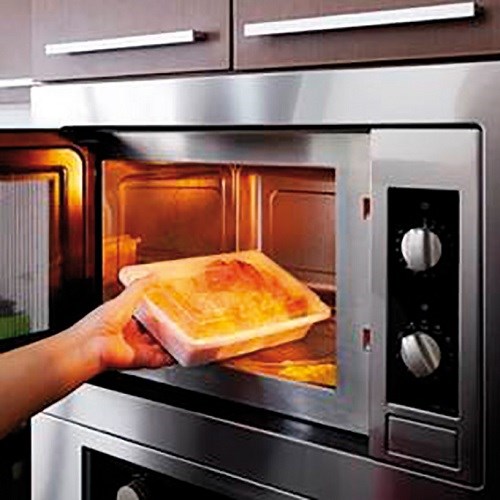In-Situ Nucleated PP Rivals Conventional Nucleation
A technology that produces a nucleating effect during the polymerization of PP boasts numerous advantages over adding a nucleating agent during pelletization.

A new technology for polypropylene nucleation just might be a game changer. We were recently contacted by Borouge, the joint venture between Abu Dhabi National Oil Company (ADNOC) and Austria’s Borealis regarding this apparently breakthrough technology.
Since its founding in 1998, Borouge has become a leading innovative polyolefins supplier serving plastics processors in 50 countries across the Middle East, Asia, and Africa. Daniel Van Houcke, lead application development engineer, explains that the new nucleated PP is based on the Borstar Nucleation Technology (BNT) which was developed with the help of their new Borouge Innovation Center in Abu Dhabi.
What should be of particular interest to PP injection molding processors is that the nucleating effect of BNT is obtained in the polymerization reactor (in situ), and boasts numerous advantages over the standard approach of adding a nucleating agent during pelletization. These include: a robust and consistent nucleation effect; higher and faster crystallization temperature; inertness and low taste and odor; and, reduced impact of colors or shrinkage of the material.
Borouge has launched the first BNT-based grade--fully compliant with food-contact regulations BorPure HJ311MO--for use in such applications as confectionary packaging, microwaveable containers, take-out food containers, media cases, and houseware containers. Field tests comparing this material to a conventionally nucleated PP grade showed the following significant benefits for processors and/or end users:
• >10% improvement in flow leading to better processability
• >10% reduction in cycle time—mainly through reduction of cooling time and easier demolding due to faster crystallization
• >10% reduction in processing temperatures leading to lower energy consumption
• >10% improvement in Charpy impact performance
• Significant improvement in organoleptics (taste and odor)
• Less breakage (waste) due to enhanced impact
• Microwaveable and reusable
A lower carbon footprint is also claimed for the new PP achieved by cycle time and energy reduction. “With the drive for sustainable innovation supported by proprietary Borstar technology and our advanced research capabilities, Borouge is committed to add value to life by shaping the plastic materials of the future,” says product development manager Balakantha Rao Kona.
According to Kona, the new Innnovation Center serves as a focal point for innovation in the polymer development and application technology. With over 70 professionals and technicians from 20 different countries, the Center is designed to provide value-added plastics for customers worldwide, focusing on the infrastructure, automotive, and advanced packaging industries. This investment includes extensive laboratory and application pilot resources. Product development focuses on high-performance, cost-effective, and differentiated polymer solutions that ensure the success of Borouge customers throughout the value chain while also helping to address some of the major global sustainability challenges. The Borouge facility also collaborates with the European innovation centers of Borealis, local and international educational institutions, and many key industry players.
Initially, processors interested in the new BNT-nucleated PP can contact Kona at: Balakantha.Kona@borouge.com. The material, which is now being produced commercially and which has been tested at various processors with excellent feedback, according to Kona, can be expected to be made available in the near future via Borealis (U.S. office is in Port Murray, N.J.).
Want to find or compare materials data for different resins, grades, or suppliers? Check out Plastics Technology’s Plaspec Global materials database.

Related Content
Density & Molecular Weight in Polyethylene
This so-called 'commodity' material is actually quite complex, making selecting the right type a challenge.
Read MoreFirst Quarter Looks Mostly Flat for Resin Prices
Temporary upward blips don't indicate any sustained movement in the near term.
Read MoreFormulating LLDPE/LDPE Blends For Abuse–Resistant Blown Film
A new study shows how the type and amount of LDPE in blends with LLDPE affect the processing and strength/toughness properties of blown film. Data are shown for both LDPE-rich and LLDPE-rich blends.
Read MoreImproving Twin-Screw Compounding of Reinforced Polyolefins
Compounders face a number of processing challenges when incorporating a high loading of low-bulk-density mineral filler into polyolefins. Here are some possible solutions.
Read MoreRead Next
Lead the Conversation, Change the Conversation
Coverage of single-use plastics can be both misleading and demoralizing. Here are 10 tips for changing the perception of the plastics industry at your company and in your community.
Read MorePeople 4.0 – How to Get Buy-In from Your Staff for Industry 4.0 Systems
Implementing a production monitoring system as the foundation of a ‘smart factory’ is about integrating people with new technology as much as it is about integrating machines and computers. Here are tips from a company that has gone through the process.
Read MoreTroubleshooting Screw and Barrel Wear in Extrusion
Extruder screws and barrels will wear over time. If you are seeing a reduction in specific rate and higher discharge temperatures, wear is the likely culprit.
Read More


















.png;maxWidth=300;quality=90)







